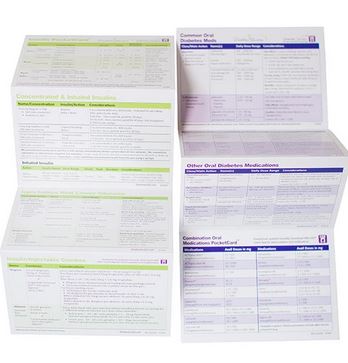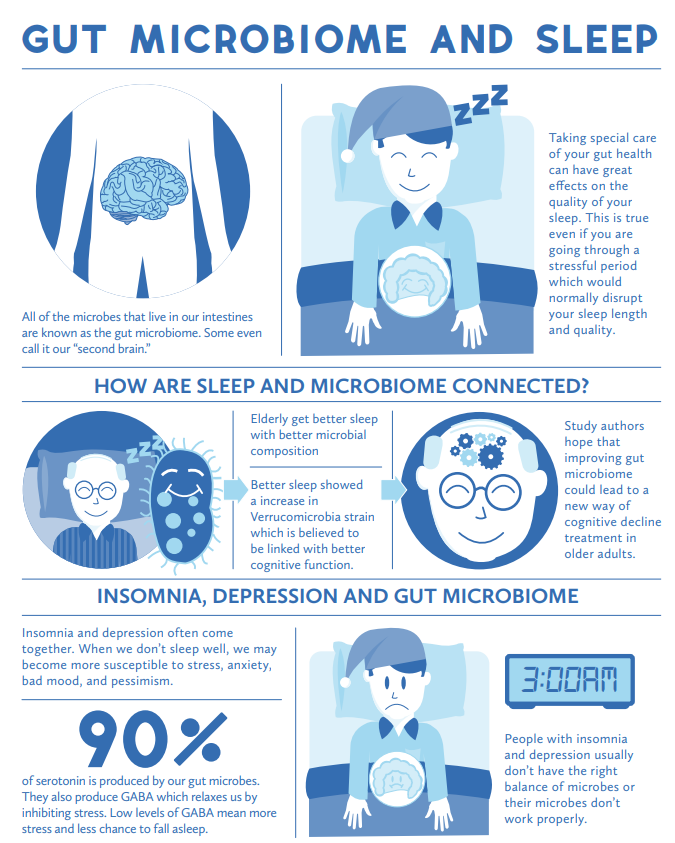Rationale of the Week | Gut, Health, Mucous Lining & Diabetes

Our November 10th Question of the week quizzed test takers on intestinal bacterial health and diabetes. 40% of respondents chose the correct answer, while 60% did not. We thought that this was an important topic to discuss further, so we can pass on correct info to people living with diabetes.
Before we start though, if you don’t want any spoilers and haven’t tried the question yet, you can answer below: Answer Question
Question: Intestinal health and diabetes are co-related. Which of the following statements is true?
Answer Choices:
- High levels of intestinal butyrate indicate excess inflammation and increased glucose levels
- Thicker intestinal mucous lining is correlated with a lower risk of diabetes
- In diabetes, there is an inverse correlation between food diversity and gut bacteria diversity
- Decreasing the prevalence of mucin-producing bacteria decreases diabetes risk

As shown above, the most common choice was option 2, the second most common answer was option 1, then option 3, and finally option 4.
Getting to the Best Answer
If you are thinking about taking the certification exam, this practice test question will set you up for success. Test writers anticipate possible answers based on the details in the question. They will wave those “juicy answers” right under your nose. Your job is to weed through the particulars, pluck out the most important elements and choose the BEST answer.
Answer 1 is incorrect. 26.30% chose this answer. “High levels of intestinal butyrate indicate excess inflammation and increased glucose levels.”
Butyrate is one of the main metabolites produced in the colon by bacterial fermentation of dietary fiber. When it comes to gut health, higher levels of butyrate, a short-chained fatty acid, indicate higher fiber consumption and overall gut health and happiness.
Answer 2 is correct. 39.86% of you chose this answer. “Thicker intestinal mucous lining is correlated with a lower risk of diabetes”.
The image to the right is a great illustration. You can see that the thicker the mucus lining in the intestinal lumen, the less overall inflammation and leaky gut. A diet high in fiber feeds the microbiota in charge of maintaining a thick and healthy mucous lining.
Answer 3 is incorrect. About 19.58% of respondents chose this. “In diabetes, there is an inverse correlation between food diversity and gut bacteria diversity”
There is actually a direct correlation between food diversity and gut bacterial diversity. Enjoy a rainbow of foods, with lots of veggies, seeds, legumes, nuts, fruit, and whole grains.
Finally, Answer 4 is incorrect. 14.25% chose this answer. “Decreasing the prevalence of mucin-producing bacteria decreases diabetes risk.”
Mucin producing bacteria, like Akkermansia Muciniphila, help maintain a healthy mucus lining in the intestinal lumen. This is associated with less overall inflammation and leaky gut. A diet high in fiber feeds the microbiota in charge of maintaining a thick and healthy mucous lining.
We hope you appreciate this week’s rationale!
To learn more about this exciting topic, please join our
FREE Webinar Recorded & Ready for Viewing – Getting to the Gut & Skin, Meet Your Microbiome
Join the wonderment as we explore the role of our Microbiome.

“This Webinar is filled with Bev’s energy, knowledge, and passion for diabetes that she replicates in all her teachings. She puts a demand on herself to be a mentor to all. Her information is well organized, full of current/relevant research, and helps CDCES’ view into the future as a changing world impacts diabetics. I find her to be the most exciting and engaging educator and … OUTSTANDING teacher!!” – recent participant
New Webinar topics:
- Discuss the latest research on our microbiome
- Describe the link between COVID and gut bacterial health
- Discuss the role of the skin microbiome in health and body weight
- Describe the importance of diet during pregnancy to promote the baby’s healthy microbiome.
- State the relationship between gut health and diabetes risk
- Describe 3 strategies to get our microbiome back to better health.
This one-hour complimentary journey will expand your view of how the trillions of bacterial hitchhikers profoundly influence our health. We will discuss how foods, the environment, and our medical practices have impacted our gut bacteria over time and strategies we can take to protect these old friends.
Sign up for Diabetes Blog Bytes – we post one daily Blog Byte from Monday to Friday. And of course, Tuesday is our Question of the Week. It’s Informative and FREE! Sign up below!
[yikes-mailchimp form=”1″]Accreditation: Diabetes Education Services is an approved provider by the California Board of Registered Nursing, Provider 12640, and Commission on Dietetic Registration (CDR), Provider DI002. Since these programs are approved by the CDR it satisfies the CE requirements for the CDCES regardless of your profession.*
The use of DES products does not guarantee the successful passage of the CDCES exam. CBDCE does not endorse any preparatory or review materials for the CDCES exam, except for those published by CBDCE.
Rationale of the Week | Hyperglycemia and Cystic Fibrosis [yikes-mailchimp form=”1″]
You’re Invited! FREE Gut & Skin Bacteria Webinar Today
November is National Diabetes Month. We are celebrating with our annual Gut Bacteria Webinar. Join Us!
Register for FREE Webinar – Getting to the Gut & Skin, Meet Your Microbiome airs TODAY, November 9th at 11:30 am PST
Can’t make the live version? That’s okay. Just register to receive the link to the recorded version later today.
Join the wonderment as we explore the role of our Microbiome.

New Webinar topics:
- Discuss the latest research on our microbiome
- Describe the link between COVID and gut bacterial health
- Discuss the role of the skin microbiome in health and body weight
- Describe the importance of diet during pregnancy to promote the baby’s healthy microbiome.
- State the relationship between gut health and diabetes risk
- Describe 3 strategies to get our microbiome back to better health.
“This Webinar is filled with Bev’s energy, knowledge, and passion for diabetes that she replicates in all her teachings. She puts a demand on herself to be a mentor to all. Her information is well organized, full of current/relevant research, and helps CDCES’ view into the future as a changing world impacts diabetics. I find her to be the most exciting and engaging educator and … OUTSTANDING teacher!!” – recent participant
This one-hour complimentary journey will expand your view of how the trillions of bacterial hitchhikers profoundly influence our health. We will discuss how foods, the environment, and our medical practices have impacted our gut bacteria over time and strategies we can take to protect these old friends.
New Updated Pocketcards Printed and Ready

Emily Gibbons– “My coworker just ordered a bunch of these cards for the physicians we work with in the hospital. They are awesome. You guys are the best! I will continue to give you business.”
Our four-sided medication accordion Pocketcards were designed by Coach Beverly Thomassian to assist in clinical practice and exam preparation. One of our best sellers, the Diabetes Medication PocketCard is perfect for all Diabetes Care and Education Specialists.
Updates Include:
- The GLP-1 RA, dulaglutide, (Trulicity), has two new higher doses.
- There is a new biosimilar basal insulin called Semglee.
- Canagliflozin (Invokana) removed the black box warning.
Sign up for Diabetes Blog Bytes – we post one daily Blog Byte from Monday to Friday. And of course, Tuesday is our Question of the Week. It’s Informative and FREE! Sign up below!
[yikes-mailchimp form=”1″]Accreditation: Diabetes Education Services is an approved provider by the California Board of Registered Nursing, Provider 12640, and Commission on Dietetic Registration (CDR), Provider DI002. Since these programs are approved by the CDR it satisfies the CE requirements for the CDCES regardless of your profession.*
The use of DES products does not guarantee the successful passage of the CDCES exam. CBDCE does not endorse any preparatory or review materials for the CDCES exam, except for those published by CBDCE.
MedDiet Can Promote Healthier Aging | Mindful Monday
A recent study published by BMJ Journals – Gut indicates that enjoying a Mediterranean diet (MedDiet) can promote healthier aging.
The study was conducted over a 12 month period across a large cohort of more than 600 individuals aged 65–79 years, within 5 different European countries (UK, France, Netherlands, Italy, and Poland). The researchers evaluated the differences in the gut microbiota in each individual before and after the year of consuming a MedDiet.
The results indicate that consuming a MedDiet improved cognitive function and the gut microbiome of those in the study.
The positive effects of these alterations showed that there was an increase in fatty acid production and a decrease in “secondary bile acids, p-cresols, ethanol, and carbon dioxide.” These changes were associated with lower frailty and improved cognitive function and an overall decrease in inflammatory markers, such as C-reactive protein and interleukin-17.
This study shows that changing to a MedDiet can have a positive impact on people as they age.
Read more by clicking here.
Want to learn more about the Mediterranean diet? Click here.
Sign up for Diabetes Blog Bytes – we post one daily Blog Byte from Monday to Friday. And of course, Tuesday is our Question of the Week. It’s Informative and FREE! Sign up below!
[yikes-mailchimp form=”1″]
Finding the Right Diet – More than a “Gut” Feeling
There are over 100 trillion microbes in our gut. These bacteria differ wildly from person to person and play a role in how each of us uniquely respond to food.
For example, one person with diabetes might eat 1/2 cup of rice and their post meal glucose may be right on target. Yet their neighbor could eat the same 1/2 cup and experience a glucose surge.

More science is emerging to explain these differences and how adjustments in food intake can be made that actually compliment the individual’s unique microbiome. The goal is to match the food to the host’s microbes to improve glucose levels and overall health.
A study conducted by Mayo Clinic set out to determine a better way to predict changes in blood sugar than measuring carbs or calories.
To do this, the researchers followed 327 people for six days. Mayo Clinic first collected a stool sample from the participants so that they could figure out the makeup of their microbiome in their gut. Then, they recorded what they ate, how much they exercised, and how long they slept for. The participants also wore a blood-glucose monitor to track their glycemic levels. Using these results they were able to come up with a model to accurately predict changes in blood sugar.
The model was a success, correctly predicting the blood sugar changes 62 percent of the time compared to the carb-based predictions which only yielded 36 percent accuracy.
The Mayo Clinic study determined that this novel method of predicting changes in blood sugar will help to individualize meal plans based on their unique microbial make-up.
The work supports the findings of a similar study from 2015 conducted by the Weizmann Institute of Science in Israel. Currently, there is an app available to customize food intake based on the individuals’ microbiome.
To read more about Mayo Clinic’s study click here!
Join us in January – Online Courses

Coach Bev will be updating all of Level 1 Diabetes Fundamental Courses via live webinars throughout this month. See full course schedule here.
Can’t make it live? No problem:
All our courses are recorded and are available for viewing in your online university account. Don’t miss these crucial 2023 updates:
Sign up for Diabetes Blog Bytes – we post one daily Blog Byte from Monday to Friday. And of course, Tuesday is our Question of the Week. It’s Informative and FREE! Sign up below!
[yikes-mailchimp form=”1″]Warning – Common Household Chemicals Associated with Excess Weight and Osteoporosis
Experts are meeting with congress to encourage investigation of the relationship of human exposure to perfluoroakyl and polyperfluoroakyl (PFAS) on weight and osteoporosis.
Early studies have shown a link between greater PFAS exposure and increased risk for endocrine outcomes like BMI >30, but more research is needed specifically to examine factors like exposure timing,” Abby Fleisch, MD, MPH
Read More here – Endocrine Today Article

These commonly found chemical PFA substances are endocrine disrupting chemicals and may be the driving factor responsible for a variety of adverse health outcomes.
PFAS are a large and expanding group of man-made compounds that are widely used to make everyday products more resistant to stains, grease and water, according to the NIH.
PFAS can be found in nonstick cookware, stain-resistant carpeting, to-go containers, cleaning products, drinking water, microwave popcorn, and even fire extinguisher foam. Toxic Free Future advises avoiding common packaged foods with grease repellent coatings (such as pizza and french fry boxes), avoid stain resistance treatments on furniture, and check personal care products for teflon, “fluoro” or “perfluoro.”
Toxic Free Future has created a fantastic educational flyer on PFAS, it’s sources, and easy alternatives:

For more tips on minimizing exposure to PFAS and what can be done about PFAS, you can visit Toxic Free Future’s website here. We also discuss PFAs in our recent FREE Webinar, Getting to the Gut. Click below to get started.
Sign up for Diabetes Blog Bytes – we post one daily Blog Byte from Monday to Friday. And of course, Tuesday is our Question of the Week. It’s Informative and FREE! Sign up below!
[yikes-mailchimp form=”1″]Free Resource Friday | Getting to the Gut Webinar Ready for Viewing

Join the wonderment as we explore the role of our Microbiome
This one-hour complimentary journey will expand your view of how trillions of bacterial hitchhikers profoundly influence our health. We will discuss how foods, the environment and our medical practices have impacted our gut bacteria over time and strategies we can take to protect these old friends. You can either view the webinar for free, or to receive 1.0 CE, purchase the webinar below for just $19 (normally $29).
Feedback from a recent participant:
“Beverly never disappoints! Great information presented so nicely. She is interesting and fun.”
“Fabulous webinar!! Great cutting edge information!”
Watch now for free (no CEs):
This webinar is completely free because we love sharing exciting information with our community! However, if you would like CEs you can purchase the individual course or as part of a series.
Sign up for Diabetes Blog Bytes – we post one daily Blog Byte from Monday to Friday. And of course, Tuesday is our Question of the Week. It’s Informative and FREE! Sign up below!
[yikes-mailchimp form=”1″]A Special Shout Out to Akkermansia Muciniphila

More intestinal mucus is better. Especially if it is microbially diverse and full of A. muciniphila. A healthy thick gut mucus lining environment boasts an abundance of A. muciniphila and is associated with decreased glucose and less inflammation. A thinner mucus layer is associated with increased diabetes risk and inflammation.
A. muciniphila, discovered only a decade ago, has the important and complex job of maintaining the mucus layer that lines the intestines. Hence the name, mucinphila or mucus loving. An intestinal mucus layer full of A. mucinphila seems to be important. This bacterium makes up just 3 to 5 percent of all gut microbes, yet it’s the main microbe floating in the mucus layer and it’s busy.
The Role of A. muciniphila
A. muciniphila prompts cells to increase mucin production which contributes to a healthy intestinal mucus layer and prevents pathogens from escaping the intestine and entering into circulation.
In rodent studies, A. muciniphila nudges the cells that line the intestine to release more endocannabinoids, which reduce inflammation and prompt release of the gut hormones, GLP-1 and GLP-2. Gut hormones lower post meal glucose levels.
A. muciniphila also helps to create small chain fatty acids from the breakdown of microbiota available carbohydrates (MACs). Fatty acids are associated with a healthier gut. They lower the intestinal pH and create a lumen environment that supports healthy bacterial diversity.
How can we increase A. muciniphila?
Metformin is associated with increased levels of A. muciniphila. Animal studies consistently show that metformin significantly promotes A. muciniphila abundance.
Eating certain whole foods and avoiding high fat diets.
Studies show that polyphenols derived from grapes and cranberries increase the abundance of Akkermansia. This results in enhanced intestinal barrier function and incretin secretion from intestinal endocrine cells. Together, these actions suppress obesity, insulin resistance, and intestinal inflammation.
In another study, apple-derived macromolecular procyanidins induced an increase in the abundance of intestinal Akkermansia leading to anti-inflammatory effects in a mouse model with metabolic syndrome.
Research has also shown that avoiding a high-fat diet and heavy alcohol intake can increase A. muciniphila abundance.
Probiotics – studies are being done to see if A. mucinphila supplements can also increase intestinal levels. There is so much more info coming out everyday about this bug superstar.
View our FREE On-Demand Webinar – Getting to the Gut, Meet Your Microbiome

This one-hour complimentary journey will expand your view of how trillions of bacterial hitchhikers profoundly influence our health. We will discuss how foods, the environment and our medical practices have impacted our gut bacteria over time and strategies we can take to protect these old friends. Join us!
Gut Bacteria Resource Page & Printable Handouts
Sign up for Diabetes Blog Bytes – we post one daily Blog Byte from Monday to Friday. And of course, Tuesday is our Question of the Week. It’s Informative and FREE! Sign up below!
[yikes-mailchimp form=”1″]Your Gut Microbiome Deserves a Good Night’s Sleep
A good night’s sleep is not only beneficial for the human host, our bacterial hitchhikers also love getting extra zzzzz’s.
Studies suggest a link between gut microbiota, sleep, and cognitive flexibility in older adults; a link between insomnia and depression; between chronic sleep disruption and insulin resistance; and a positive connection between lactobacillus casei and deep sleep.
These Sleepline infographics summarize this relationship in an easy to understand and share format.
Read Sleepline’s summary of these studies here.


View our FREE On-Demand Webinar – Getting to the Gut, Meet Your Microbiome

This one-hour complimentary journey will expand your view of how trillions of bacterial hitchhikers profoundly influence our health. We will discuss how foods, the environment and our medical practices have impacted our gut bacteria over time and strategies we can take to protect these old friends. Join us!
Gut Bacteria Resource Page & Printable Handouts
Sign up for Diabetes Blog Bytes – we post one daily Blog Byte from Monday to Friday. And of course, Tuesday is our Question of the Week. It’s Informative and FREE! Sign up below!
[yikes-mailchimp form=”1″]









